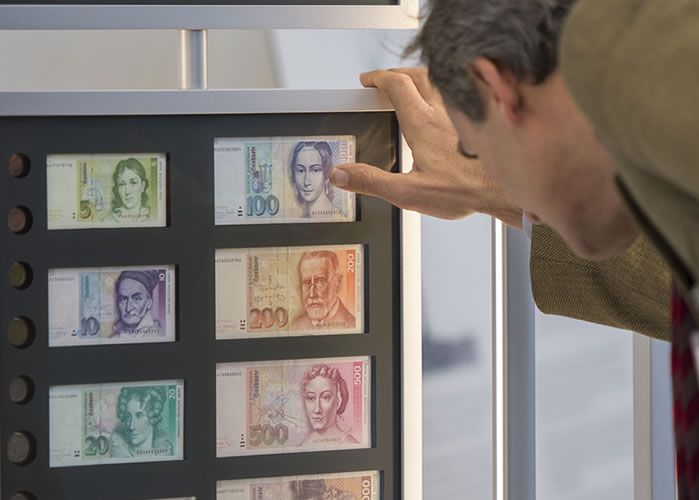EUR/USD: 15 Month Lows on the Horizon, to Close in on Parity Forecast ING

The US Dollar extends its gains against the majority of currencies ahead of th weekend and in the process takes EUR/USD below 1.05.
Eurozone data hasn't been terrible and German yields have actually moved higher in lockstep with U.S. rates but dollar bulls are driving EUR/USD's direction.
"If EUR/USD drops below 1.0490, the currency pair would be trading at its weakest level in 6 weeks, opening the door for a move down to 15 year lows," says Kathy Lien, Director at BK Asset Management.
Meanwhile, ING’s FX Strategist Chris Turner forecasts the Euro to Dollar exchange rate to fall to just above parity.
The Dollar is set to gain, according to Turner, who sees increased chances of a March rate rise following an uncharacteristically hawkish speech from a known Fed Dove, Lael Brainard, who said she though the economy was “in transition”.
Hawkish could be taken to mean ‘optimistic’ in this context although in its purest sense it means desirous of higher interest rates. Dovish is the opposite ie desirous of lower interest rates.
If someone like Brainard is suggesting the economy is turning upwards, then that indicates a broader consensus must be forming in the Federal Reserve Open Market Committee (FOMC), tasked with setting interest rates, to raise interest rates.
There also appears to be “much focus on the roll off of the balance sheet which is likely to be embraced later this year,” says ING’s Turner.
This basically means that instead of reinvesting the principle the Fed gets when the bonds it holds mature, and buying more Treasury bonds, it will desist.
Such a move will lead to reduction in demand for Treasuries because the Fed is major buyer, and this will in turn lead to a fall in bond prices and a rise in yields.
Higher yields tend to spell upside for the Dollar.
Finally, Trump’s recent speech laid out his policy table and high on the agenda remained infrastructure spending, which was also doubled to 1tr from 500bn promised prior to the election.
Higher stimulus should lead to increased growth and inflation and the Fed having to raise interest rates. This in turn will strengthen the Dollar.
“Combining a more bullish Fed with Trump’s possible fiscal strategy (business tax cut, border tax adjustment and repatriation bill) and the case for a stronger dollar continues to build. We favour dollar gains largely to be seen against the low-yielders (JPY, EUR & GBP) given that strong PMIs are supporting growth prospects and activity currencies. Yellen speaks tomorrow night and DXY could head to 103,” said Turner.
The point about improving PMI’s which are business surveys, is echoed by Abn Amro, who site this as a major factor in their bullish outlook for interest rates and the Dollar.
“The sharp year-to-date improvement in US business surveys signals the possibility of accelerating US growth in early 2017. Business surveys released so far in 2017 have been quite strong, with the January ISM manufacturing and non-manufacturing indices at or near one-year highs and consumer confidence surveys also trending up. Other data releases, including consumer spending, have also been stronger than expected,” remarked Abn Amro in a recent note seen by PSL.
Indeed, both they and Bank of Tokyo Mitsubishi have recently released notes announcing their view that the Fed will raise interest rates at their March 15 meeting.
Downside Forecast for the Euro
Coupled with a generally upbeat view of the Dollar is a less flattering one of the Euro.
Turner sees the real problem lying in a squeezing of ‘real’ interest rates in the Euro area.
“Real” in this context means the interest earned after inflation is taken away, and he argues this margin in narrowing in the Eurozone.
This is due to the European Central Bank keeping interest rates stubbornly low whilst inflation rises.
The reason this impacts on the Euro is because it reduces flows from foreign investors who generally prefer a greater return after accounting for inflation when seeking a depository for their capital.
The detraction of the Euro-area as a host for foreign capital flows can have a decisive impact on the currency since it accounts for such a large proportion of foreign exchange demand.
Turner therefore forecasts EUR/USD falling to 1.02 in the first half of 2017.
'U'-Shaped Outlook
In the second half of the year, however, he foresees a rebound as places change and the Dollar becomes the less attractive member of the pair.
This could be due to the Dollar’s own strength and rising interest rates slowing down economic activity and making US exports less competitive, as noted by Bank of Tokyo Mistsubishi.
Turner, however, focuses more on the Euro, which he sees rallying in H2 due to the ECB finally unwinding its QE programme.
This is further supported by a recent note from Bank of America Merrill Lynch, who forecast a ‘U’ shaped year for EUR/USD.
They also note the Euro being supported by the likely unwinding up of QE in H2.
“It is all about the USD for now. We expect US fiscal stimulus, which together with political risks in Europe should help weaken the EUR in H1.
Although we remain positive on France, investors will hedge the French elections following Brexit and Trump surprise wins. We expect ECB constraints to become a more important driver and strengthen the EUR in H2,” said BoFA.
